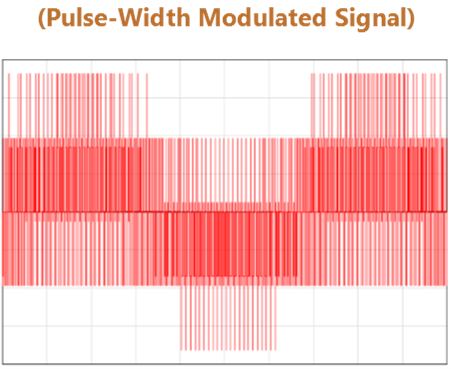The Basics of Reactors
Introduction:
In order to understand the basics of reactors, we first need to look at how motor drive systems work. Motors that operate on alternating current need special power supplies that deliver power to start and stop the motor smoothly. If the motor were to transition from full “off” to full “on” in a short period of time, it would put undue stress on the mechanical parts of the equipment. Instead, the power supply needs to start and stop the fan motor gradually. Likewise, once a motor is running, many applications require adjusting its speed and torque to accommodate different mechanical loads. Variable frequency drives (VFDs) provide a power supply that can offer gradual start/stop and variable speed/torque. By adjusting the frequency of current sent to a motor, a VFD controls its speed.
Variable Frequency Drive (VFD):
AC motors operate at their peak efficiency when they run on clean sinusoidal power. VFD's, however, produce modulated square waves. The pulse width of these square waves are variable. This is known as PWM—pulse width modulation. VFDs can also control the amplitude of each square wave.

Powering a motor with square waves might, at first, sound like a poor idea. However, VFD's maintain such fine control over the width and amplitude of the square waves that they take on the appearance (as viewed on an oscilloscope) of fairly good approximations of a sine wave. Yet even the most sophisticated VFD's fail to match the purity of a true sine wave. These variable frequency drives produce distortion or "noise" on both the input and output of the drive. That's where reactors come in.
The Benefits of Line Reactors:
Installing a reactor between the utility gird and the VFD protects the grid from drive produced current harmonic distortion. For a more robust solution, CTM Magnetics offers GridHawk passive harmonic filters.
The VFD and reactor combination reduce overall input current harmonic distortion, helping you maintain IEEE-519 compliance. Operating a motor drive system without a reactor or harmonic filter can cause several problems:
- If you are generator powered, a high level of reflected harmonics can cause unwanted nuisance tripping.
- Elevated levels of harmonic distortion force you to derate the size of your generator in order to compensate. Generator derates can be as high as 3 times the desired power rating.
- The motor drive system could be sending significant harmonic distortion back to the utility grid, effecting IEEE-519 compliance.
- Harmonic distortion can effect other equipment connected to the same grid system.
CTM line reactors and GridHawk filters solve all of these problems while reducing capitol investment (CAPEX), operating cost (OPEX), and increasing over all system efficiency. In all, CTM has reactors and GridHawk filters designed for max current loads between 80 and 950 amps, providing a wide selection of products and price points.
The Benefits of Load Reactors:
Installing a reactor between the VFD and the motor protects the motor from drive produced current harmonic distortion. For a more robust solution, CTM Magnetics offers a wide variety of sine wave filters for both line and high frequency applications.
The VFD and reactor combination reduce overall output current harmonic distortion, protecting the motor. Operating a motor drive system without a reactor or sine wave filter can cause several problems:
- Premature motor failure
- Heating of electrical components
- Reduced system efficiency and longevity
CTM load reactors and sine wave filters solve all of these problems while reducing capitol investment (CAPEX), operating cost (OPEX), and increasing over all system efficiency. In all, CTM has reactors and sine wave filters designed for max current loads over 1,000 amps, providing a wide selection of products and price points.
For more information on reactor basics, contact CTM today.
 " alt="">
" alt="">